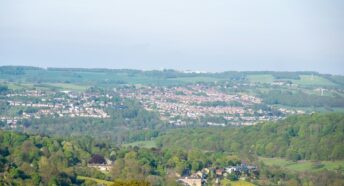We told you there was brownfield…
More homes need to be built in England. With our rate of building still stumbling along – 217,350 new builds in 2016/2017 according to government figures against a 300,000-home target that many commentators say we need to be building – it’s clear there is a problem.
But it would be a mistake to think this increase has to come at the expense of our countryside, when we have plenty of available brownfield land in our towns and cities that could be regenerated to provide housing.
The government has been slowly coming round to the real potential of brownfield land in England, but that didn’t stop them from publishing a report in 2015 that dismissed CPRE’s claims that more than one million homes could be built on available brownfield. Instead, over the past few years, ministers have officially plumped for estimates of between 200,000 homes and 400,000 homes, and dismissed our figures as ‘wildly optimistic‘.
How could our numbers be so different?
Up until recently, we have bumped up against a major barrier to the proper use of our brownfield land: the lack of a systematic way of finding and recording it. The CPRE has long called for a national register of brownfield land, and in 2017, the government published regulations requiring all planning authorities to publish such a register by the end of the year. More than 95% of local planning authorities in England have now published their surveys of available brownfield land, and the data shows that we were right all along.
Our analysis of the published registers found suitable brownfield sites (as determined by local councils) for more than one million homes. Much of this capacity can be redeveloped now. Two-thirds of the homes can be delivered in the next five years, representing 60% of our housing need in that time – a significant contribution that must not be overlooked.
If we want to make the best use of our finite land and balance our housing need against the very real threat to our green spaces, we have to be creative about where we build. Whether it’s old factory sites, car parks or waste ground, the regeneration of urban brownfield is an essential part of building homes while protecting the countryside. It can also help regenerate our cities, and there is a strong social, environmental and economic case for prioritising the use of brownfield land.
Developments on greenfield land are often situated on the outskirts of cities and towns, with poor connecting infrastructure, limited amenities, and with a predominance for car-dependent development. Making the best use of brownfield land means new development can occur in built-up areas, where infrastructure and services are already in place, or can be provided relatively easily. Done well, it brings homes, jobs and services closer together, reduces car dependence, removes local eyesores and enhances communities.
Thanks to the success of the brownfield registers, we now know that brownfield has huge potential, but many, including the government, insist that the housing capacity is not where most people want to live. Our analysis shows there is a strong relationship between the capacity of brownfield and areas of high housing need. In other words, it is in places that people want to live, work and play. Despite the clear ability of brownfield land to make a significant contribution to meeting future housing need, especially in areas where that need is highest, our countryside is still being unnecessarily lost, and by many measures, this loss is accelerating.
There is a worrying lack of action to make the most of this available land. More than 600,000 homes of the identified housing capacity do not yet have planning permission, including 150,000 homes that councils think can be built in the next five years. We really need to get to grips with bringing these sites forward.
Additionally, the registers do not identify all brownfield opportunities. For example, due to resource constraints and site size thresholds, not all councils have included small sites – sites for fewer than 10 homes. If more registers looked at small sites, we estimate space for another 220,000 homes could be identified. Small sites are particularly valuable in rural areas, such as in villages and market towns, where much-needed development can be provided without encroaching on the surrounding countryside.
Yet more homes could be delivered if we used our brownfield land more efficiently. The densities of identified sites is very low, and small increases in density could have a significant effect. Matching the average density of new developments of 37 dwellings per hectare could add 130,000 to the available capacity.
There is huge potential for new homes to be delivered on brownfield sites where people want to live, and the upcoming review of the National Planning Policy Framework (NPPF) is a fantastic opportunity for the government to realise this potential. We need a strong brownfield-first policy that prioritises the redevelopment of urban brownfield with good access to services.
Any revised NPPF should empower councils to ensure brownfield sites are built out before greenfield sites; this means giving councils the power to refuse permission for greenfield sites where there are suitable, alternative brownfield sites.
The government should also provide effective guidance to local authorities to help them identify all opportunities on previously developed land, not just for housing, but to help build thriving communities across the country.
Obviously, brownfield can’t provide all the housing sites we need. But it’s important to remember that brownfield land is a renewable resource; new sites are identified all the time as land use patterns change.
We’ve got a great opportunity to make the most of brownfield land. Let’s not let it pass us by.
This blog was first published on Inside Housing









